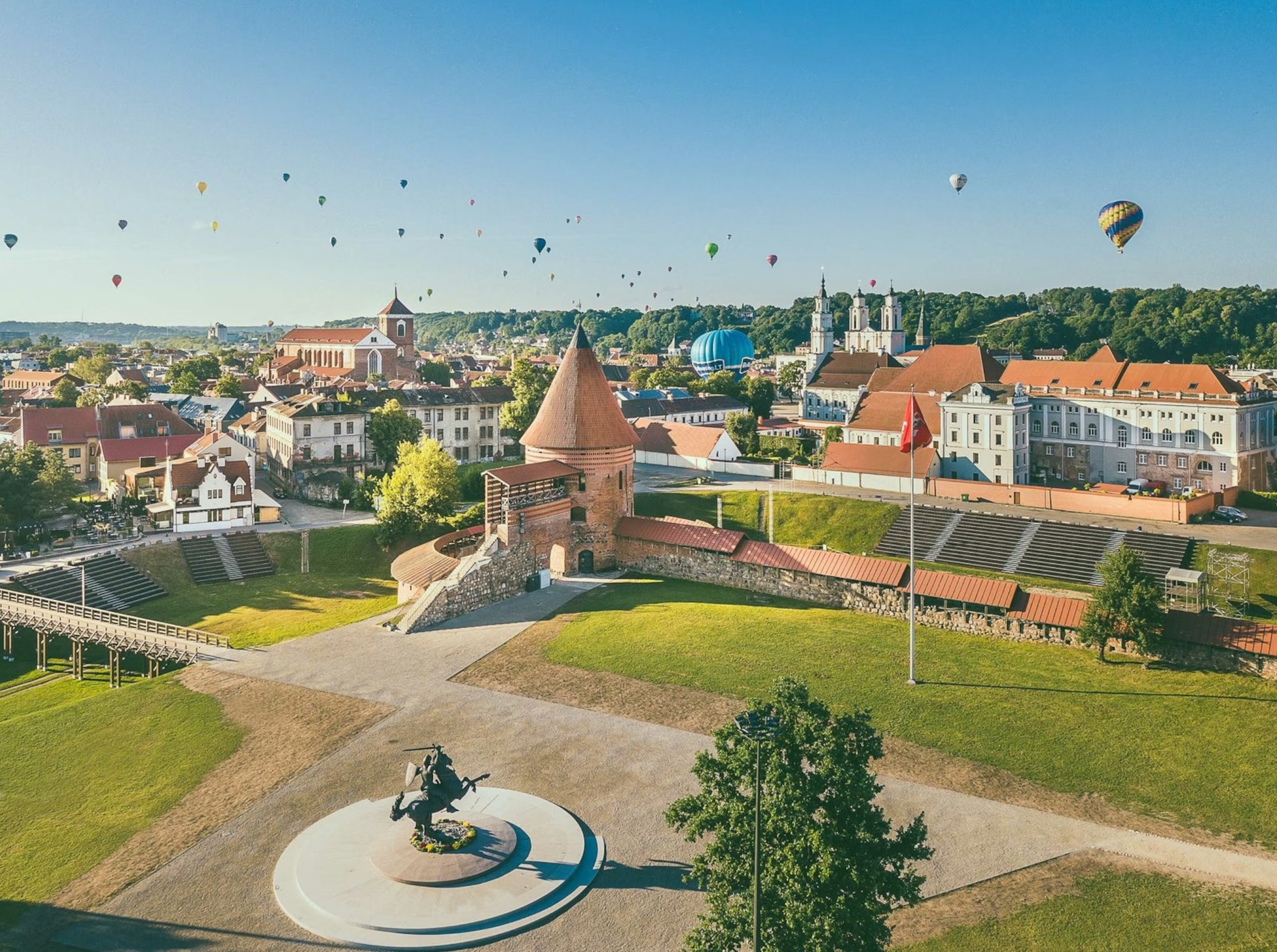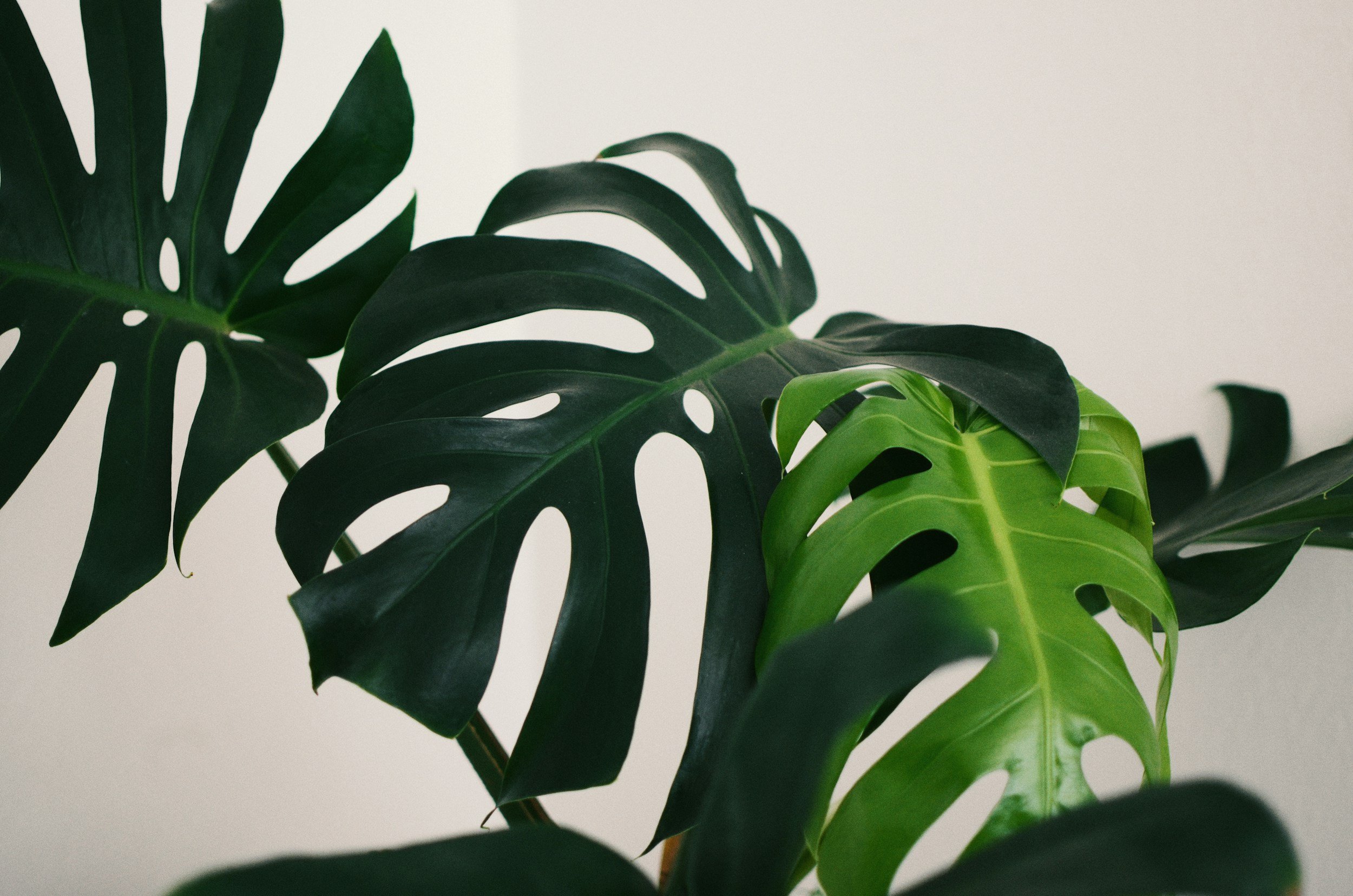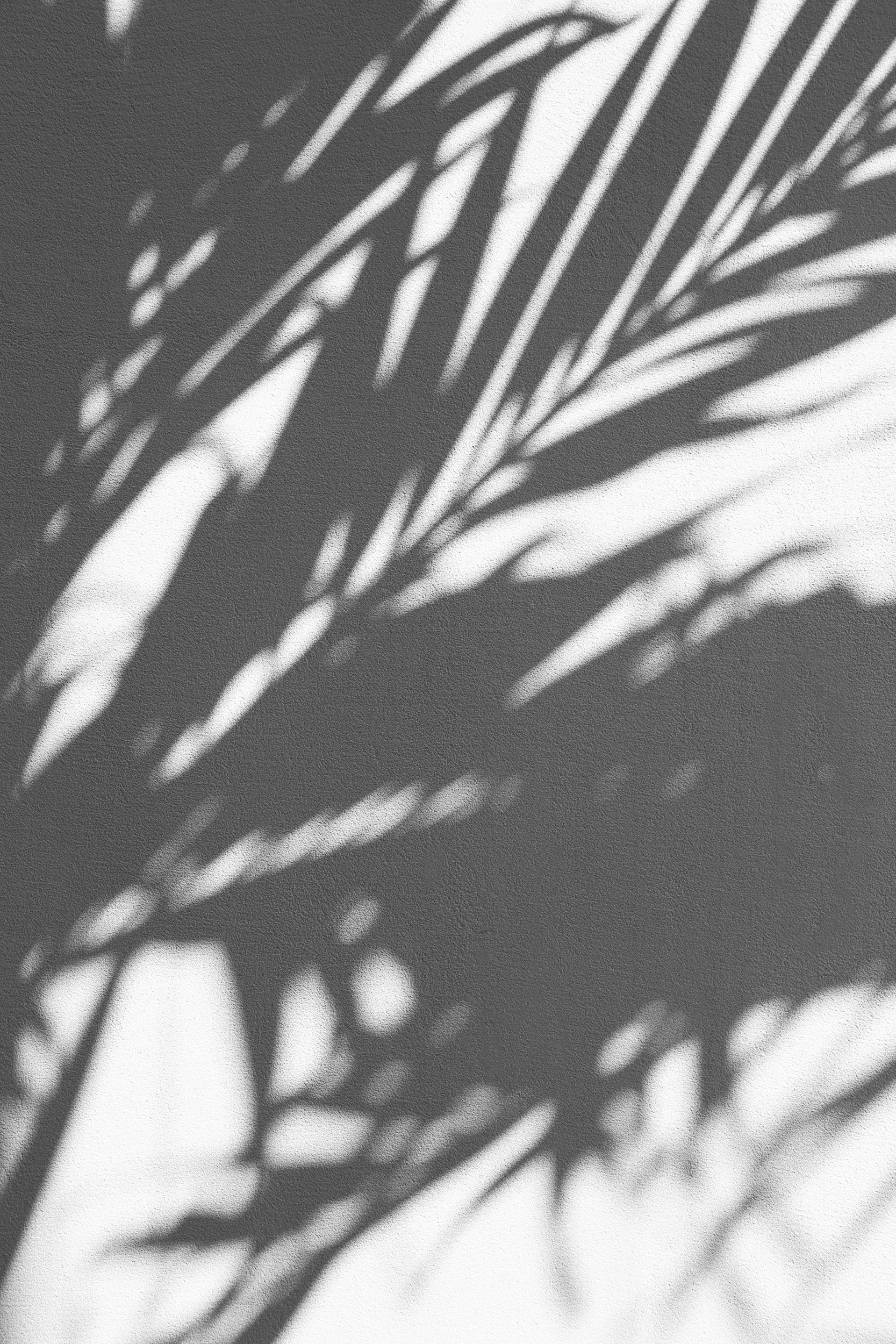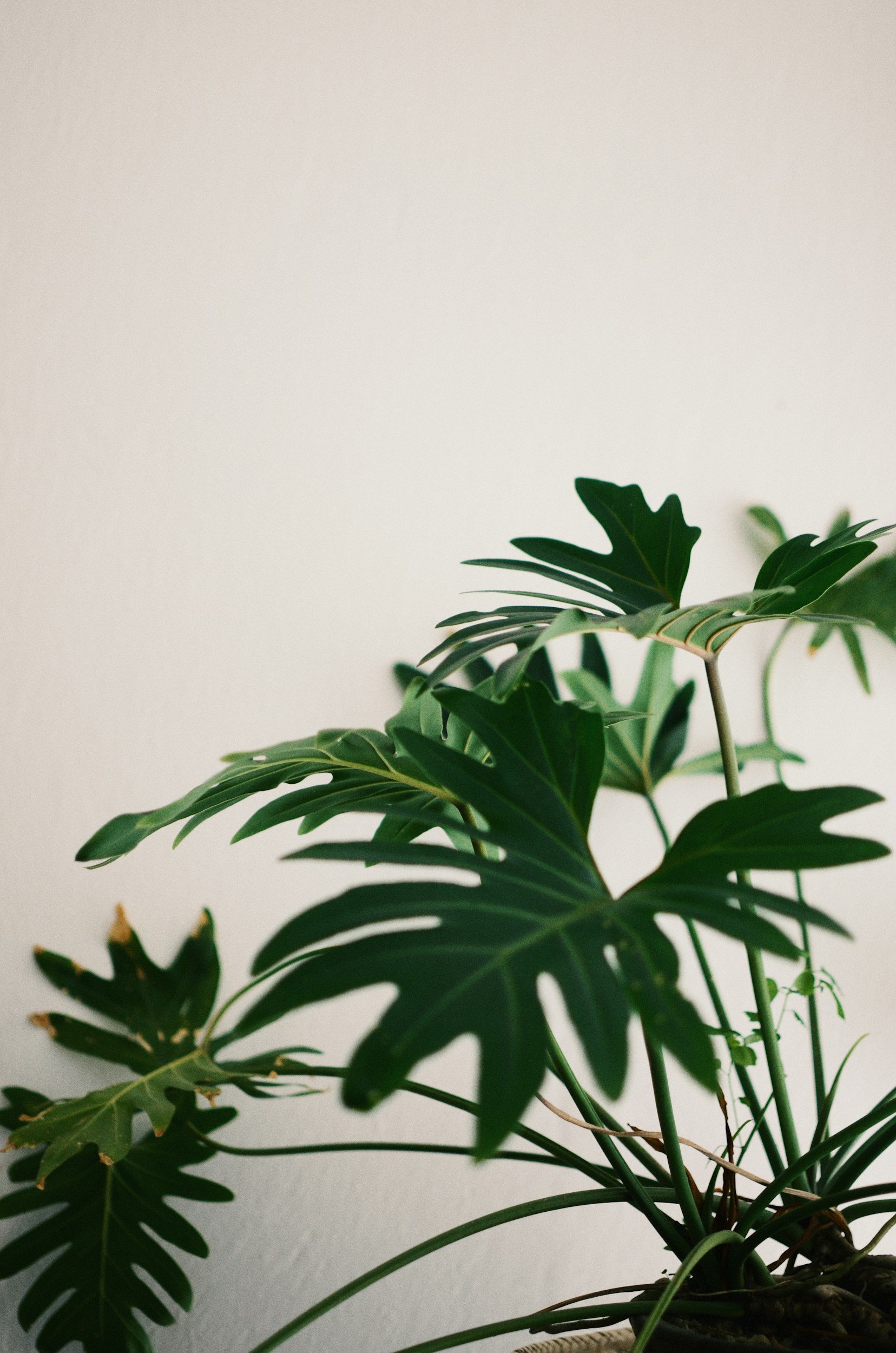
What to do and see in Lithuania
Exploring Kaunas
Kaunas was established as a fortress in 1030, became a town in 1317, and achieved self-governance in 1408. It was frequently attacked by the Teutonic Knights, suffered damage during Napoleon's advance in 1812, and endured heavy destruction during World War II. It was rebuilt many times, and thus contains architecture from multiple periods, such as gothic, baroque, modernism, and postmodernism.
From 1920 to 1940, Kaunas also served as the capital of independent Lithuania. Kaunas was designated as the European Capital of Culture for the year 2022.

-

Kaunas Old town
Kaunas Old Town is the most charming part of the city. It spans the whole length of Vilniaus gatvė (street) and all the smaller streets around it.
The main points of interest here are:
- The City Hall Square
- Kaunas Cathedral Basilica
- Kaunas Castle
- Church of Vytautas the Great (the oldest church in Kaunas built circa 1400. It also has a water level measuring station for the Nemunas river) -

Aleksotas Observation Point (and a Funicular ride)
This is the best spot to get a pretty shot of the city, and it is conveniently reachable by a vintage funicular.
The funicular was built in 1935, and is still running today. You can catch it at Amerikos Lietuvių g. 6, Kaunas. Make sure to have some euro coins available for tickets, or take the stairs to get to the the viewing spot instead.
-

Kaunas New Town
The New Town area is primarily centered around the 1.7 km long pedestrian street called Laisvės alėja (Liberty Avenue), along with its surrounding vicinity.
The key attractions in this area include:
- Church of St. Michael Archangel
- Fontanas
- Unity Square
- Eternal flame
This street is the most popular in Kaunas and, in addition to numerous cafes and shops, it is also renowned for its modernist architecture, which has been recognized by UNESCO. See more -
Restaurant "Bernelių Užeiga"
The restaurant chain "Bernelių užeiga" is the best place to taste traditional cuisine.
To get an insight on all the traditional dishes (we have so many!), check the food guides below:
Food guide 1,
Food guide 2,
Food guide 3Adelė's favorites are "Kugelis" (potato bake), "Vėdarai"(potato sausage), "Varškės apkepas" (curd bake), "Kibinai" (Lithuanian empanadas), "Kepta duona" (fried bread), and "Naminė Gira" (Lithuanian soft drink). The ultimate must-try would be "Cepelinai".
Locations:
M. Valančiaus g. 7, Kaunas
K. Donelaičio g. 11, Kaunas
Akropolis, Karaliaus Mindaugo pr. 49, Kaunas -
Devils Museum
A unique museum in Kaunas displays over three thousand artworks featuring the devil. Initially a private collection, it has become one of the most beloved museums in the city.
Lithuanians have a peculiar fascination with the devil, with over 5,000 legends and fairy tales mentioning this mythical creature. Additionally, there are approximately 400 place names in Lithuania associated with the devil.
-

Vytautas the Great War Museum
After Lithuania declared its independence in 1918, a museum, representing the history of the country was built. This building was financed by many patriotic citizens and the foundation was built on soil brought from war fields. The huge size of the museum is a monument to Vytautas the Great, one of the most important early historical leaders of the nation. Outside there is a small garden planted honoring those who died for Lithuanian independence.
-

Nemunas island
A large island on the Nemunas river in the centre of the city, popular with the locals and hosting the occasional cultural event.
The length of the island is more than 1,5 kilometers and it can be reached by crossing one of the bridges. The eastern part of the island is known for a modern Žalgiris arena, frequently holding basketball matches, concerts and other events. On the west side, a brand new Technology and Innovation Center is currently being built and should be open by June 2025.
The island is also a perfect place for a walk or a picnic.
Nemunas island on the map -

Santakos Parkas (Confluence Park)
The confluence of two of Lithuania's biggest rivers, the Nemunas and the Neris, is sometimes referred to as the birthplace of Kaunas. The name "Santaka" is closely related to the Lithuanian word "Santuoka," which means marriage. The spot is extremely popular for setting up dates and proposals.
Every Thursday, a Romuvian (Romuva is a contemporary continuation of the traditional ethnic religion of the Baltic peoples, more than 5,000 people consider themselves Romuvians) mass is held at the aukuras (fire altar) in the Confluence park.
Worth a visit, if you rent a car:
-

9th Fort of the Kaunas Fortress
The 9th fort, completed just before World War I, can be seen when traveling on A1 highway. The site also has an impressive monument for the victims of Nazism, erected in 1984. In the interwar period, the fort served as a division of Kaunas Hard Labour prison, in 1940-1941 as an NKVD prison, and as a place of mass murder, with 50 thousand people killed in the later parts of the war. In 1958, a museum was established in the fort exhibiting many artefacts of the Nazi and Soviet genocide. The fort has been restored and it is possible to visit almost all of its premises, also via the internet.
-

Kadagių Slėnis (Juniper Valley)
Juniper Valley is a unique place in Lithuania. The botanical reserve is situated in Arlaviškės village, on a steep slope of Nemunas river populated by freegrowing Junipers. The valley is decorated with a variety of plants in various colours and shapes, some extremely rare. Juniper Valley belongs to Kaunas Lagoon Regional Park and is one of Lithuanias national nature monuments.
Read more
Kadagynės g., Arlaviškių k., Taurakiemio sen., Kauno r. -

Pažaislis Church and Monastery
It is one of the most beautiful ensembles of Baroque style in Lithuania. In the 17th century Kristupas Žygimantas Pacas (1621–1684), Chancellor of the Grand Duchy of Lithuania, built the shrine for Camaldolese monks on the edge of Kaunas, in the remote forest at that time. The ensemble was designed by an Italian architect Giovanni Battista Frediani and decorated with moldings of Lombardy’s craftsmen and frescoes of Florentine painter Mikelios Arkangelo Palonio.
We recommend to also take a stroll around the territory (outside the walls) to enjoy the nature and the views of the water.
-

The Open-Air Museum
One of the largest ethnographic open-air museums in Europe. The museum was established on the picturesque shores of Kaunas Lagoon in Rumšiškės in 1966. The exhibitions at the museum are intended to introduce the ethnographic regions of Lithuania, i. e. Dzūkija (Dainava), Aukštaitija (Highlands), Suvalkija (Sudovia), Žemaitija (Samogitia) and Lithuania Minor, as they looked at the end of the 18th century and the first half of the 20th century.
L. Lekavičiaus g. 2, Rumšiškės

Adelė's favourite places in Kaunas
-
Spurginė (The Doughnut Place)
A tiny doughnut place, and a time capsule. The shop/cafe is run by the same women making the same doughnuts (the recipes haven't changed) for nearly 40 years! It looks the same as it did from the start, and it is truly a legendary place in Kaunas. Just to set the expectations right, the doghnuts are more like breadrolls with various fillings. (Anders describes them as a fried version of the danish æbleskiver.)
Adelė would order:
Varškės spurga, ir Kakava
(Curd Doughnut, and Hot Choco).
Laisvės al. 84, Kaunas
CASH ONLY -

Ąžuolyno Parkas (Oak Grove)
Take a stroll in the largest oak grove in an urban area in Europe.
Find a statue of Taurus (a very large bull) that features in childhood pictures of everyone who grew up in Kaunas.
Check out Dainų Slėnis (Songs valley), where a yearly song festival is hosted.
The park is just up the hill from the city center, you can take a walk up Parodos g. street., take a bus that goes up, or take the stairs via Vytautas park (which is where the amusement park for kids used to be when Adelė was small). -

M. K. ČIURLIONIS NATIONAL MUSEUM OF ART
Mikalojus Konstantinas Čiurlionis is a lithuanian composer, painter, choirmaster, cultural figure, and a writer.
Considered one of the pioneers of abstract art in Europe, his works have had a profound influence on modern Lithuanian culture.
During his short life, he composed about 400 pieces of music and created about 300 paintings, as well as many literary works and poems. You can see his paintings and listen to the music he composed in the museum.
-

Chocolaterie "Rūta"
Adelė's favorite store to get chocolates. You can find single handmade chocolates, chocolate boxes, large chunks of cholocate, weird chocolate shapes and various berries and nuts dipped in chocolate.
Adelė would get a bag of raspberries and blueberries in white chocolate, and raisins in milk chocolate.
Where to eat in Kaunas
The city center has many restaurants that serve mostly the same food, such as soups, salads, meat dishes, burgers, pizza and pasta. If you want to try traditional cuisine, the best place for that is “Bernelių užeiga”. If you want a portion of really good food, check the finer dining options below.
Kaunas does not get enough tourists, so there aren’t any particular tourist traps here. Most restaurants cater to local customers, and they often have English menus as well.
Please note: while Lithuanian people excel in hospitality in their own homes (you will always be offered food and beverages even if you just stop by for 5 minutes), they are not known for their customer service. So if the service is slow, the server is a bit rude or you encounter other hiccups, just know it is never about you, they just woke up like this :)
Some of the restaurants we visited and liked:
Višta Puode (they serve some of Adelė’s childhood dishes, such as curd bake, “whistlers” (type of gnocchi), creppes (always folded and with a filling), and jelly cake.
Mtevani (Georgian restaurant)
Talutti Tex-Mex (Mexican inspired)
Al Cantuccio (Italian inspired)

Finer dinning in Kaunas
If you are into dining experiences and tasting menus, try some of the Michelin-recommended restaurants in Kaunas. We highly recommend taking advantage of that price difference :)
Exploring the rest of Lithuania
Lithuania was a powerful empire from the 14th–16th centuries. It became part of the Polish-Lithuanian Confederation for two centuries. After a brief independence from 1918 to 1940, it was occupied by Russia, briefly controlled by Germany during World War II, and incorporated into the U.S.S.R. in 1944.
Lithuania declared independence on March 11, 1990, and it was acknowledged by the Soviet parliament on September 6, 1991. In 2004, Lithuania joined the European Union (EU) and NATO.
-

Birštonas
Birštonas, famed for its salty mineral water and mud, is a balneological resort and a spa town in Lithuania situated 30 km south of Kaunas. Located on the banks of the Nemunas River, Birštonas is surrounded by expansive pine forests, and is a perfect place to rejuvenate yourself.
Birštonas is a small and very walkable town. It takes just under an hour to get there by bus, or a car from Kaunas. See how to get there.
The best SPAs in Birštonas:
Vytautas Mineral Spa (our favorite)
Medical SPA "Egles Sanatorija"
Royal SPA Residence
Harmony ParkPoints of interest in Birštonas:
Mineral Water Graduation Tower
Birutės Vila
Kneipp Garden
Vytautas Park
Vytautas Hill (for the views)
Observation Tower (also for the views)
Nemunas Loops Regional Park, Visitor CenterIf you're feeling adventurous:
Flights over Nemunas Loops Regional Park (the site does not have an english version, but you can google translate by right clicking on the page and selecting "Translate to English")
If you are ready to travel further, visit the oldest and most popular health resort Druskininkai instead. It is bigger, with more things to do, just as green and peaceful, and full of water springs.
You can find all the information here. -

Trakai
Trakai is famous for its castle located on an island (the only one in Easter Europe) in the middle of a lake. It's also a charming town where you can find a few museums and traditional houses, and taste the most authentic Lamb Kibinai (lithuanian empanadas - a baked pastry with filling).
Trakai is located between Kaunas and Vilnius, and can be reached by a train, bus or a car. See how to get there.
Expect to spend from half a day to a full day in Trakai.
The main things to do in Trakai:
Visit Trakai Castle
Rent a boat/ water bike, a whole boat , or a yacht
Go for a swim in one of the lakes
Eat some kibinaiIf you're staying for longer/ have a car:
Visit the Hill of Angels
Take a hike in Varnikų Nature Trail
See the Devil's pit
Pick some blueberries (book it before)
Visit this charming church
Take a hot air baloon flight over Trakai -

Vilnius
Vilnius is the capital and the largest city in Lithuania, and the second-most-populous city in the Baltics.
It is about an hour away from Kaunas by train, bus or a car. See how to get there.
If you choose to visit, spend at least 1-2 full days here. Also note that the transport between Kaunas and Vilnius stop running around 21.00.
What to see:
Vilnius Old Town (Unesco-listed)
The Cathedrall Basilica of St. Stanislaus and St. Ladislaus
Towh Hall Square
St. Anne's Church
Bernardine Garden
Gediminas' Tower
Gediminas avenue (the main street)
Užupis (a lithuanian Christiania that is now a lovely neighborhood hosting artists, intellectuals and enterpreneurs)
The Bastion of the City Wall
Museum of Occupation and Freedom Fights
Mo Museum (Moders Art)
Lukiškės prison 2.0
Free Guided tours
Cinema "Pasaka" (shows lithuanian movies with english subtitles)
Eat in one of the newly rewarded Michelin restaurants -

Anykščiai
Anykščiai is known for the natural beauty of the surrounding landscape. All thanks to a local bishop, a mathematician, and most importantly a poet – Antanas Baranauskas, whose legendary “Anykščių šilelis” (eng Anykščiai pinewoods) poem is taught across Lithuania in schools. A. Baranauskas is not the only poet to come from Anykščiai, he was followed by other famous Lithuanian writers.
Things to do in Anykščiai:
See the Puntukas boulder
Enjoy the view from Anykščiai Treetop Walking Path
Take a walk in Anykščių šilelis (forrest)
Visit Horse museum
Visit Anykščiai Old Town
Check out the Anykščiai Church
Visit the Historical Complex of Šeimyniškėliai Mound
Take a walk by the Šventoji river
Take a ride on an alpine coaster
Get lost in a great maze
Ride a narrow-gauge train
Bike around the Lake Rubikiai
Where to stay in Anykščiai: https://www.visitanyksciai.lt/accommodation/ -

The Hill of Crosses
Apart from being a religious place, where the Pope John Paul II held a mass and Christians to this day travel to errect a new cross to mark their special moments in life, it is also a symbol of defiance.
When the old political structure of Eastern Europe fell apart in 1918, Lithuania once again declared its independence. Throughout this time, the Hill of Crosses was used as a place for Lithuanians to pray for peace, for their country, and for the loved ones they had lost during the Wars of Independence.
Repeated efforts to bulldoze and burn down the hill during the 1960s and '70s didn't deter locals from placing crosses here, despite the harsh punishments for being caught. Today the site is open to people of all cultures and religions, and it is forbidden to remove a cross from the site. Instead, you can plant a cross of your own (plenty of crosses are sold nearby) to mark your own special moment.
The Hill of Crosses on the map -

Curonian Split
The Curonian Spit is one of the most unique places in Lithuania. 98 km long and between 0,4 – 4km wide it separates the Curonian Lagoon from the Baltic Sea. Home to just a couple of villages, surrounded by endless pine forests and drifting sand dunes, the Curonian Spit was awarded UNESCO World Heritage Site status in 2000.
The main reason to come here is the sand dunes. Up to 60 meters high in places, these are the highest drifting dunes in Europe.
To make the most of it you will need a car. But it is possible to take a train or a bus to Palanga or Klaipėda from Kaunas/Vilnius.
Best dunes:
Parnidis Dunes
The Dead DunesBest places to visit here:
Walk over the Monkey Birdge
Stroll through Palanga Bridge (Palanga is the most popular and the most touristic beach town in Lithuania)
Visit Palanga Amber Museum
Take a walk in Klaipėda Old Town (Klaipėda used to be part of Prussia Kingdom and is the 3rd largest city in Lithuania)
Visit Lithuanian Sea Museum
Take a break at Smiltynės Beach
Bike through Juodkrantė
Take a walk on the Hill of Witches
Visit Thomas Mann Culture Center
Check out the Nida Lighthouse
Take a stroll through Nida - the furthest and (used to be) the calmest of our beach towns in Lithuania (it is becoming more popular each year).





